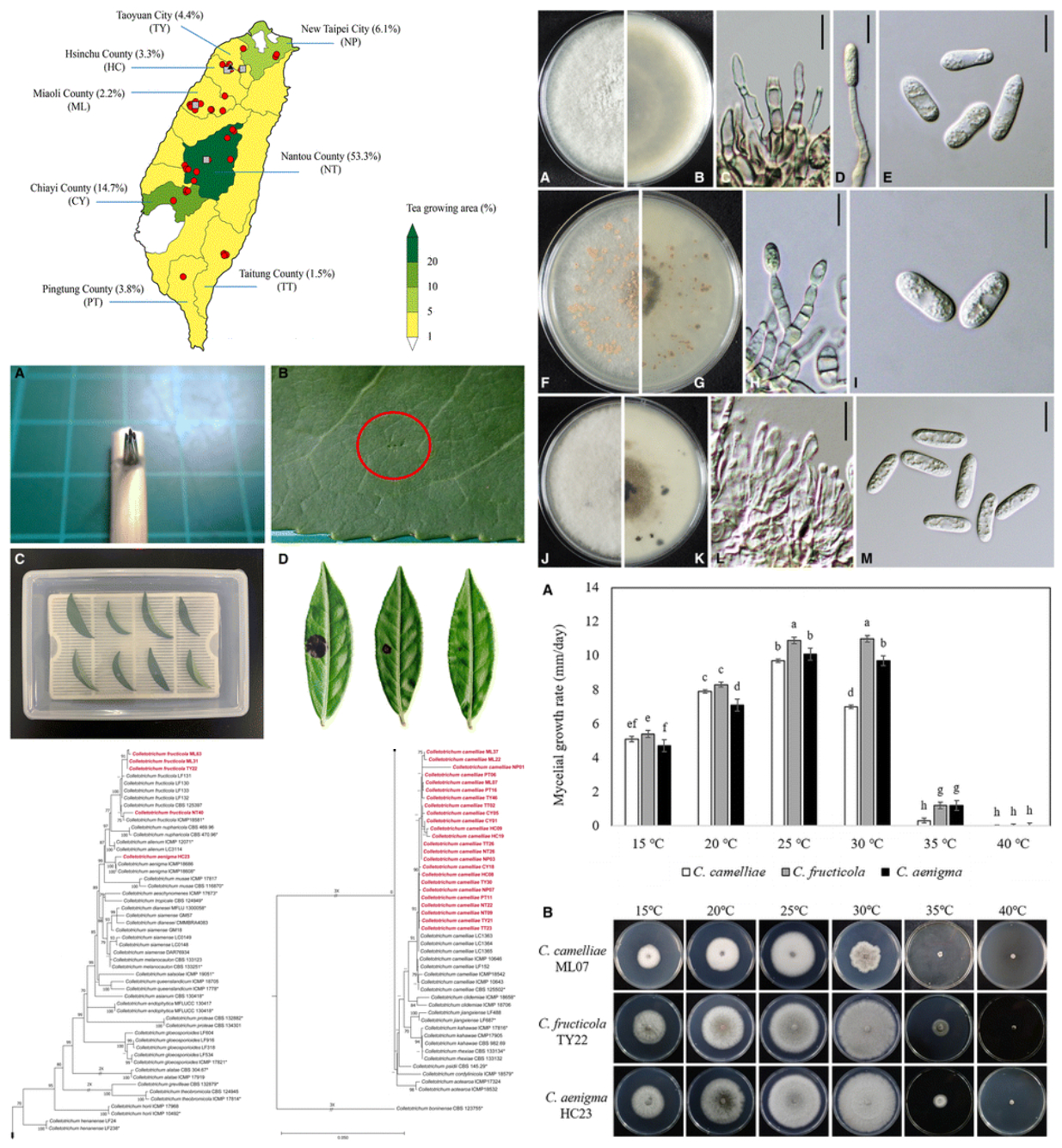Dr. Hung and Dr. Chung conducted an in-depth investigation into the severe tea brown blight disease that has emerged in Taiwan in recent years. From 2017 to 2019, the research team isolated 139 Colletotrichum strains from 14 tea cultivars across 86 tea plantations in Taiwan. Combining morphological characterization and multilocus phylogenetic analysis of ITS, ApMat, GS, TUB2, ACT, CAL, and GAPDH genes, they identified 95.7% of the strains as C. camelliae, 3.6% as C. fructicola, and 0.7% as C. aenigma, marking the first report of C. aenigma in Taiwan.
In addition, the research team used a newly established inoculation system to evaluate the pathogenicity of representative strains. The results showed that C. camelliae exhibited the highest pathogenicity across different temperatures but required wounded young leaves to infect. In contrast, C. fructicola and C. aenigma were more adapted to higher temperatures. The study found that for wounded third and fourth tea leaves, both spore suspensions and mycelial discs resulted in significantly larger lesions and higher disease incidence. This research indicates that the key time for applying preventive fungicides or biocontrol agents is immediately after tea pruning and during the young leaf stage to effectively control tea brown blight.

- Paper link:
Lin, S.-R., Lin, Y.-H., Ariyawansa, H. A., Chang, Y.-C., Yu, S.-Y., Tsai, I., Chung, C.-L., Hung, T.-H. (2023). Analysis of the pathogenicity and phylogeny of Colletotrichum species associated with brown blight of tea (Camellia sinensis) in Taiwan. Plant Disease. 107:97-106. doi:10.1094/PDIS-03-22-0509-RE